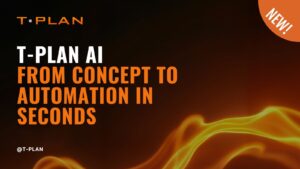The distinction between truly data-driven automation and merely repetitive scripting represents one of the most critical decisions facing modern software development teams. Whilst many organisations believe they’ve implemented sophisticated automation frameworks, closer examination often reveals collections of hard-coded scripts that repeat identical actions with minimal variation. This fundamental misunderstanding not only limits testing effectiveness but also creates maintenance nightmares that undermine the very efficiency automation was meant to provide.
True data-driven testing represents a paradigm shift from static, repetitive scripts to dynamic, intelligent frameworks that can adapt to virtually unlimited data scenarios whilst maintaining the same underlying test logic. This approach separates test data from test scripts, enabling teams to achieve comprehensive coverage across multiple input combinations, edge cases and user scenarios without duplicating code or multiplying maintenance overhead.
The challenge lies not in understanding the theoretical benefits of data-driven approaches, but in implementing frameworks that genuinely deliver on their promise of flexibility, maintainability and comprehensive coverage. T-Plan exemplifies this evolution by enabling both technical and non-technical teams to build truly data-driven tests without writing code, whilst maximising reusability through scripts that can handle unlimited data permutations across devices, browsers and operating systems.
The question facing development teams today is not whether to adopt data-driven approaches, but how to distinguish between superficial repetition and genuine data-driven intelligence. This comprehensive guide explores the fundamental characteristics of truly data-driven automation frameworks, examining the strategic decisions that separate effective implementations from costly repetitive scripting exercises.

Table of Contents
Understanding the data-driven paradigm
Data-driven testing fundamentally transforms how teams approach test automation by establishing clear separation between test logic and test data, enabling single test scripts to execute across virtually unlimited data scenarios. This paradigm shift moves beyond the traditional approach of creating separate scripts for each test scenario, instead focusing on building intelligent frameworks that can adapt dynamically to different input conditions whilst maintaining consistent validation logic.
The core principle underlying data-driven automation involves parameterising test actions so that the same logical sequence can be executed with different input values, expected outcomes and validation criteria. This parameterisation extends beyond simple variable substitution to encompass complex data relationships, conditional logic and dynamic decision-making that enables tests to respond appropriately to varying data conditions.
External data sources become central to data-driven frameworks, with test data stored in spreadsheets, databases, configuration files, APIs, or other external repositories that can be accessed and manipulated independently of test scripts. This external storage enables non-technical team members to contribute test data, modify test scenarios and expand test coverage without requiring programming expertise or script modifications.
Test script reusability represents one of the most significant advantages of data-driven approaches, enabling single scripts to validate multiple user workflows, edge cases and business scenarios. Rather than maintaining separate scripts for each combination of inputs and expected outcomes, data-driven frameworks enable comprehensive coverage through parameterised logic that adapts to different data conditions automatically.
Dynamic test execution becomes possible when frameworks can make intelligent decisions based on data characteristics, environmental conditions, or runtime variables. This intelligence enables tests to follow different execution paths, apply different validation criteria, or handle different exception conditions based on the specific data being processed.
Scalability improvements emerge naturally from data-driven architectures that can accommodate growing data volumes, additional test scenarios and expanding application functionality without requiring proportional increases in script maintenance or development effort. This scalability proves essential for supporting agile development practices and continuous integration pipelines that demand rapid, comprehensive testing feedback.
Identifying truly data-driven characteristics
Distinguishing between genuinely data-driven frameworks and superficially parameterised scripts requires understanding the fundamental characteristics that enable true data-driven intelligence. These characteristics extend beyond simple variable substitution to encompass sophisticated capabilities that enable frameworks to adapt dynamically to changing data conditions whilst maintaining robust validation logic.
Data source independence represents a hallmark of truly data-driven frameworks, enabling test scripts to consume data from multiple sources without requiring modifications to test logic. Whether data originates from spreadsheets, databases, APIs, configuration files, or real-time feeds, genuinely data-driven frameworks can adapt to different data formats and sources seamlessly.
Dynamic data interpretation capabilities enable frameworks to understand data relationships, validate data integrity and make intelligent decisions based on data characteristics. Rather than simply substituting values into predefined placeholders, advanced data-driven frameworks can analyse data patterns, identify edge cases and adjust execution logic based on data complexity or unusual conditions.
Conditional execution logic allows data-driven frameworks to follow different test paths based on data values, environmental conditions, or runtime variables. This conditional intelligence enables single scripts to handle multiple business scenarios, exception conditions and edge cases without requiring separate implementations for each variation.
Comprehensive parameterisation extends beyond input values to include expected outcomes, validation criteria, execution timing and environmental configurations. Truly data-driven frameworks enable every aspect of test execution to be controlled through data, creating unprecedented flexibility in test scenario definition and execution.
Error handling sophistication distinguishes advanced data-driven frameworks from simple repetitive scripts through intelligent exception management that can adapt to different error conditions, data quality issues, or environmental failures. Sophisticated error handling enables frameworks to continue processing remaining data sets even when individual test iterations encounter problems.
Reporting and analytics capabilities in data-driven frameworks provide detailed insights into test execution patterns, data coverage and failure analysis across different data scenarios. Advanced reporting enables teams to identify data-related issues, optimise test coverage and make informed decisions about test strategy and data quality.
Breaking free from repetitive scripting patterns
The transition from repetitive scripting to truly data-driven automation requires fundamental changes in how teams approach test design, implementation and maintenance. This transformation challenges traditional thinking about test automation whilst requiring new skills, processes and tooling that support genuinely data-driven approaches.
Script consolidation represents the first step in eliminating repetitive patterns, requiring teams to identify common test logic that can be parameterised and reused across multiple scenarios. This consolidation process often reveals significant duplication in existing test suites whilst highlighting opportunities for dramatic reduction in maintenance overhead.
Parameterisation strategies must extend beyond simple variable substitution to encompass complex data relationships, conditional logic and dynamic decision-making. Effective parameterisation enables scripts to handle multiple business scenarios, edge cases and exception conditions through intelligent data interpretation rather than hard-coded logic.
Data abstraction layers separate test logic from data management concerns, enabling teams to modify data sources, formats and structures without affecting test implementations. These abstraction layers prove essential for maintaining framework flexibility whilst enabling different team members to work with data and scripts independently.
Template-based test development enables teams to create reusable test patterns that can be instantiated with different data sets, configurations and validation criteria. Template approaches dramatically reduce development time whilst ensuring consistency across different test scenarios and team members.
Configuration-driven execution enables frameworks to adapt their behaviour based on external configuration files, environment variables, or runtime parameters. This configuration-driven approach eliminates hard-coded assumptions whilst enabling the same test logic to execute appropriately across different environments, platforms and scenarios.
Maintenance reduction strategies focus on creating self-documenting, easily understood test logic that can be maintained by team members with varying technical expertise. Effective maintenance strategies include clear naming conventions, comprehensive documentation and modular design that enables targeted updates without affecting unrelated functionality.
Implementing keyword-driven testing approaches
Keyword-driven testing represents a sophisticated evolution of data-driven approaches that enables non-technical team members to create and maintain complex test scenarios through business-friendly language rather than programming code. This approach separates test design from technical implementation, enabling broader team participation in test creation whilst maintaining the flexibility and power of automated testing.
Keyword libraries form the foundation of keyword-driven approaches, providing collections of reusable actions that can be combined to create complex test scenarios. These libraries abstract technical implementation details behind business-friendly keywords that describe actions in terms of user workflows and business processes rather than technical operations.
Action abstraction enables complex technical operations to be represented through simple, intuitive keywords that non-technical team members can understand and use effectively. This abstraction eliminates the need for detailed technical knowledge whilst maintaining the full power of automated testing capabilities.
Composition flexibility allows keyword-driven tests to be created through combinations of existing keywords, enabling complex test scenarios to be built from simple building blocks. This compositional approach enables rapid test development whilst ensuring consistency and maintainability across different test scenarios.
Business language integration enables test scenarios to be expressed in terms that business stakeholders can understand, review and validate. This integration improves communication between technical and business teams whilst ensuring that test scenarios accurately reflect business requirements and user expectations.
Maintenance advantages emerge from keyword-driven approaches where changes to underlying technical implementations can be made in keyword libraries without affecting test scenarios that use those keywords. This separation enables technical improvements and adaptations to be implemented without disrupting existing test assets.
Collaboration benefits result from keyword-driven approaches that enable different team members to contribute to test development based on their areas of expertise. Business analysts can define test scenarios, technical team members can implement keyword libraries and testers can validate and execute comprehensive test suites.
Maximising reusability across platforms and devices
True data-driven automation frameworks must demonstrate their value through comprehensive reusability that spans multiple platforms, devices, browsers and operating systems without requiring separate implementations or maintenance overhead. This cross-platform reusability represents one of the most significant advantages of properly implemented data-driven approaches.
Cross-platform compatibility requires frameworks that can execute identical test logic across different operating systems, browsers and device types whilst adapting appropriately to platform-specific characteristics. This compatibility eliminates the need for separate test implementations for different platforms whilst ensuring comprehensive coverage across all supported environments.
Device adaptation capabilities enable frameworks to adjust their behaviour based on device characteristics such as screen size, input methods, performance capabilities and available features. Adaptive frameworks can optimise test execution for different device types whilst maintaining consistent validation logic and coverage.
Browser independence allows data-driven frameworks to execute across different browser engines, versions and configurations without requiring browser-specific modifications. This independence proves essential for comprehensive web application testing whilst reducing maintenance overhead associated with browser-specific implementations.
Configuration management enables frameworks to adapt their behaviour based on platform-specific requirements, capabilities and constraints. Effective configuration management allows the same test logic to execute appropriately across different environments whilst maintaining consistent coverage and validation criteria.
Parallel execution capabilities enable data-driven frameworks to execute simultaneously across multiple platforms, devices and browsers, dramatically reducing total test execution time whilst increasing coverage. Parallel execution proves particularly valuable for continuous integration scenarios where rapid feedback is essential.
Maintenance efficiency emerges from reusable frameworks where updates, improvements and bug fixes can be implemented once and automatically applied across all supported platforms and devices. This efficiency represents a significant advantage over platform-specific implementations that require separate maintenance efforts.
Handling complex data inputs and sources
Advanced data-driven frameworks must demonstrate sophisticated capabilities for handling diverse data sources, complex data relationships and dynamic data generation whilst maintaining robust error handling and data validation. This complexity handling distinguishes truly advanced frameworks from simple parameterised scripts.
Multiple data source integration enables frameworks to consume data from spreadsheets, databases, APIs, configuration files and real-time feeds within the same test execution. This integration capability proves essential for comprehensive testing scenarios that require data from multiple business systems and external sources.
Data format flexibility allows frameworks to process data in various formats including JSON, XML, CSV, Excel and proprietary formats without requiring format-specific modifications to test logic. This flexibility enables teams to work with existing data sources whilst maintaining framework simplicity and maintainability.
Dynamic data generation capabilities enable frameworks to create test data programmatically based on business rules, data patterns, or environmental conditions. Dynamic generation proves particularly valuable for performance testing, edge case validation and scenarios requiring large volumes of realistic test data.
Data relationship handling enables frameworks to understand and maintain complex relationships between different data elements, enabling comprehensive validation of business logic and data integrity across multiple related data sets. This relationship handling proves essential for enterprise applications with complex data models.
Real-time data processing allows frameworks to consume and process data that changes during test execution, enabling validation of dynamic applications and real-time business processes. Real-time processing capabilities prove essential for testing modern applications that rely on live data feeds and dynamic content.
Data validation and quality assurance capabilities ensure that frameworks can detect and handle data quality issues, missing data and inconsistent data formats without compromising test execution. Robust data validation prevents poor data quality from undermining test reliability and validity.
Building maintainable test automation architectures
Sustainable data-driven automation requires architectural approaches that support long-term maintainability, team collaboration and evolving business requirements without accumulating technical debt or creating maintenance bottlenecks. These architectural considerations prove essential for realising the full potential of data-driven approaches.
Modular design principles enable frameworks to be organised into logical components that can be developed, tested and maintained independently. Modular architectures reduce complexity whilst enabling different team members to work on different aspects of the framework without creating conflicts or dependencies.
Version control strategies ensure that both test scripts and test data can be managed effectively through source control systems, enabling teams to track changes, manage releases and coordinate collaborative development. Effective version control proves essential for maintaining framework integrity and enabling team collaboration.
Documentation standards ensure that frameworks remain understandable and maintainable by team members with varying technical expertise and experience levels. Comprehensive documentation includes both technical implementation details and business-focused descriptions that enable different stakeholders to understand and contribute to framework development.
Code quality practices including automated testing, code reviews and quality metrics ensure that frameworks maintain high standards of reliability, performance and maintainability. Quality practices prove essential for preventing technical debt and ensuring that frameworks continue to deliver value as they evolve.
Continuous integration integration enables frameworks to be tested, validated and deployed automatically as part of standard development workflows. CI integration ensures that framework changes are validated thoroughly whilst enabling rapid feedback and deployment of improvements.
Performance monitoring and optimisation ensure that frameworks continue to execute efficiently as they grow in complexity and data volume. Performance monitoring enables teams to identify bottlenecks, optimise execution and ensure that frameworks scale appropriately with growing requirements.
Measuring success and continuous improvement
Effective data-driven automation frameworks require comprehensive measurement strategies that enable teams to quantify their success, identify improvement opportunities and demonstrate business value through objective metrics and continuous optimisation efforts.
Coverage metrics provide quantitative measures of how comprehensively data-driven frameworks validate different scenarios, edge cases and business conditions. Coverage analysis enables teams to identify gaps in testing whilst ensuring that frameworks deliver appropriate breadth and depth of validation.
Efficiency measurements track how effectively frameworks utilise resources, minimise execution time and reduce maintenance overhead compared to traditional scripting approaches. Efficiency metrics justify investment in data-driven approaches whilst identifying opportunities for further optimisation.
Quality indicators measure the effectiveness of data-driven frameworks in detecting defects, preventing regressions and ensuring application reliability. Quality metrics demonstrate the business value of comprehensive testing whilst highlighting areas where additional coverage or validation may be needed.
Maintenance tracking monitors the effort required to maintain, update and extend data-driven frameworks over time. Maintenance metrics validate the promised benefits of data-driven approaches whilst identifying potential architectural improvements or process optimisations.
Team productivity measurements assess how data-driven frameworks affect development velocity, team collaboration and overall delivery capability. Productivity metrics demonstrate the broader organisational benefits of effective automation whilst identifying opportunities for further improvement.
Continuous improvement processes use measurement data to drive ongoing optimisation of framework capabilities, performance and maintainability. Continuous improvement ensures that frameworks evolve to meet changing requirements whilst maintaining their effectiveness and value to the organisation.
The strategic advantage of genuine data-driven automation
The evolution from repetitive scripting to truly data-driven automation represents more than a technical upgrade; it constitutes a fundamental transformation in how organisations approach software quality, development velocity and team collaboration. This transformation requires not only new tools and techniques but also new mindsets, processes and organisational structures that support genuinely data-driven approaches.
The strategic advantages of data-driven automation extend far beyond immediate cost savings or efficiency improvements to encompass sustainable competitive advantages through superior software quality, faster development cycles and more effective resource utilisation. Organisations that master data-driven approaches position themselves to respond more quickly to changing market conditions whilst maintaining higher quality standards and more predictable delivery schedules.
T-Plan’s approach to data-driven automation exemplifies the potential of modern frameworks to simplify complex testing challenges whilst delivering unprecedented flexibility and reusability. By enabling teams to handle complex data inputs from spreadsheets, APIs, PDFs and databases within the same test run, T-Plan demonstrates how advanced frameworks can eliminate traditional barriers between technical and business team members whilst maximising the value of automation investments.
The future of software development belongs to organisations that can effectively combine human creativity and business insight with the consistency and scale of truly data-driven automation. By embracing comprehensive data-driven approaches, teams can achieve the quality, speed and reliability that define success in increasingly competitive markets whilst building sustainable foundations for continued innovation and growth. If you want to learn more about how we can best support you, contact us today.


